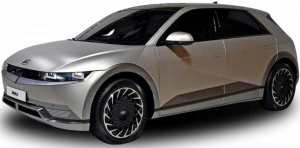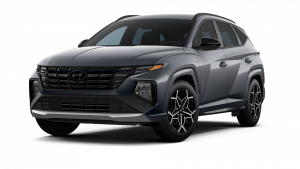Winter Tire Guide
The Winter Tire Guide for Ontario Drivers – by Pathway Hyundai
Come winter time everyone seems to be going on about winter tires, and if you’re on the fence about getting a set or just looking for information about why changing tires is recommended for the cold months, this article will help point out why winter tires are a great idea and how they differ from your standard all-season tires.
Why Winter Tires
So you’ve got a great set of all-season’s on your vehicle and they seem to do okay in the snow, why should you consider getting a set of winter tires?
The quick answer is that all-season tires begin to loose elasticity when the temperature drops below 7oC (or 45oF) and with it goes the tire’s ability to maintain adequate performance, while winter tires are specifically engineered to excel in performance at these temperatures and below sub-zero and tremendously aid in keeping control of your vehicle in unfavorable conditions.
Winter tires are made with cold weather rubber compounds that are designed to maintain elasticity in cold temperatures. This rubber may be thought of as ‘softer’ and is able to get a better grip on the ground even in sub-zero temperatures. Additionally, tread patterns on winter tires are technologically designed for both better wet-surface control and deep snow traction, making them ideal in icy, snow or slushy conditions.
All-Seasons Versus Winter Tires
All season tires are designed to work well under a very large range of conditions making them great for a large portion of the year, but they begin to experience limitations once temperatures drop below that 7oC (45oF) mark. They are designed with fewer tread sipes and less open tread block patterns which allow for easier snow build up, and in combination with less elasticity in the rubber overall less traction with the road below, which is what ends up leading to sliding around corners or needing more time to stop your vehicle.
In contrast to all-season tires, winter tires are designed with a higher number of slits in the tread blocks and a more open tread block pattern which in turn reduce snow build up as well as help traction on wet surfaces. Unlike all-seasons, winter tires begin to become effective around 7oC (45oF) and increase in efficiency as the temperature approaches -30oC (-22oF) and beyond.
While softer rubber compounds greatly increase traction during cold weather, they wear down much quicker when driven on warm, dry roads, which is why we don’t typically keep them on our vehicles all year round. There would be nothing unsafe about doing so, but you would just end up replacing your tires more often. The conclusion is that having each a set of winter tires and all-season tires is by far the best way to stay as safe as you can on the roads, as well as extend the life of your tires as far as they will go.
When Using Winter Tires
The first thing you should note is to always install winter tires in sets of 4. It is a common misconception that installing two winter tires on the front of your vehicle alone will be of benefit, this is not exactly true. Introducing a difference in the balance and tread designs between your front and rear tires will likely lead to inconsistencies in steering and overall control of your vehicle. These differences will be accentuated by snowy, icy or slushy road conditions. It is recommended by Transport Canada that winter tires are installed in full sets of four.
If you install a brand new set of snow tires, your vehicle may feel and sound a little different on the road at first. Allow yourself to get used to the new driving sensation, winter tires are made up from several layers of fabric, rubber and steel which need to be broken in before they reach optimal performance. It is recommended to avoid aggressive driving for the first 200-300 kilometers on a new set of snow tires to bring them to maximum performance levels.
Winter Tires at Pathway Hyundai
Pathway Hyundai’s certified technicians are always available to help you with your winterizing options. Please don’t hesitate to call and book an appointment now to help get you on your way to safe driving through the winter months.























